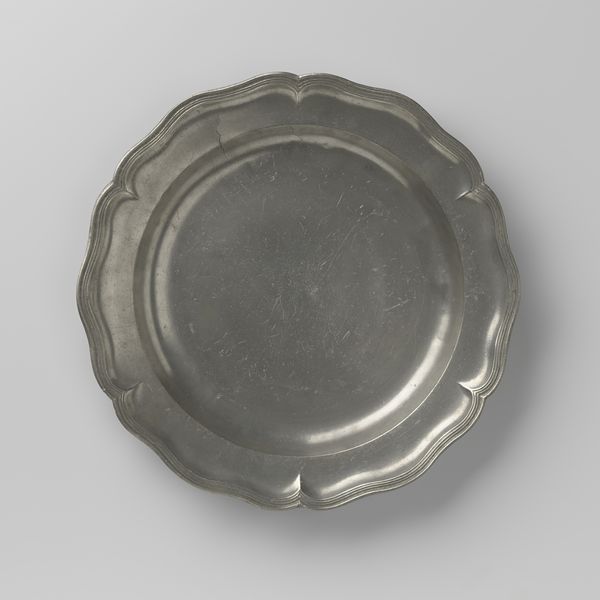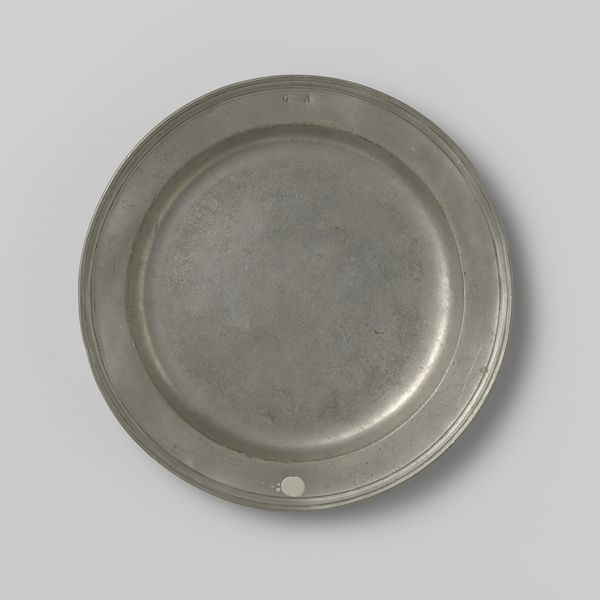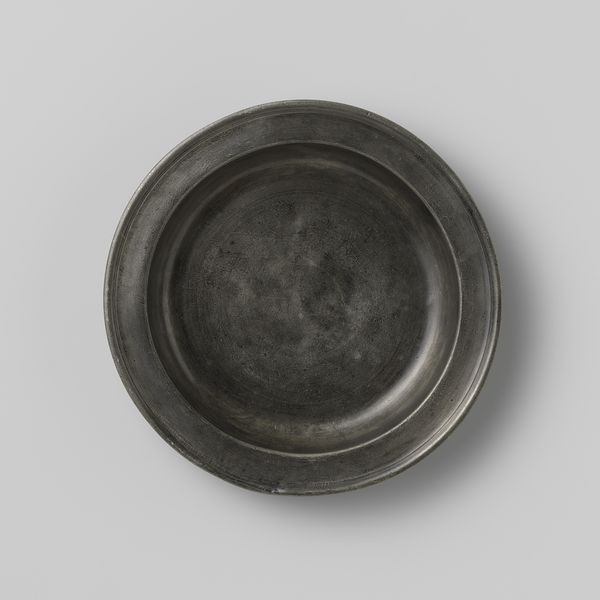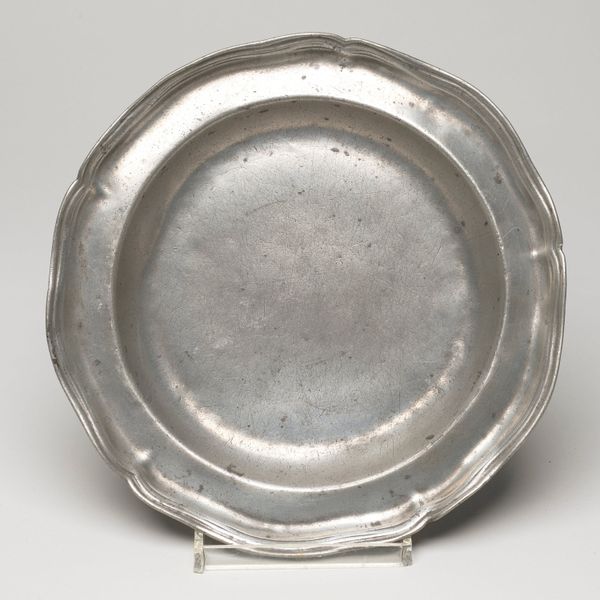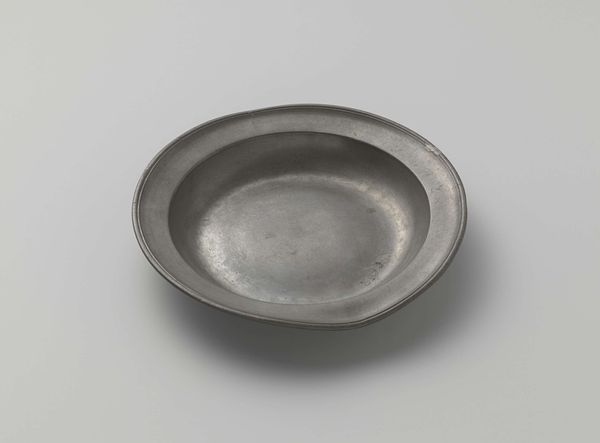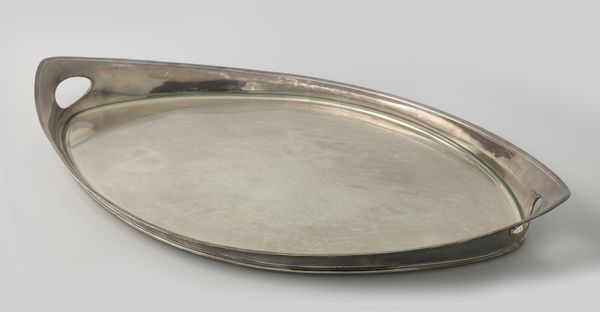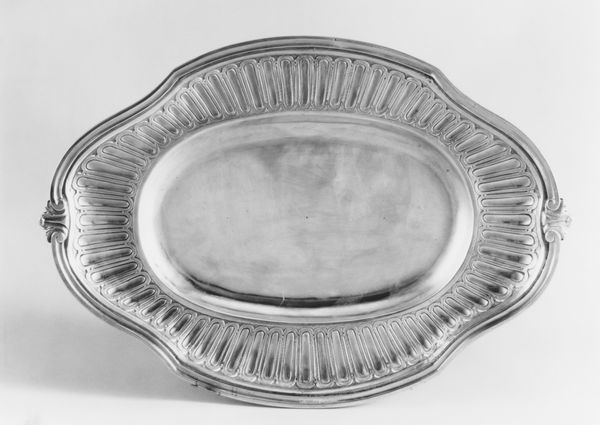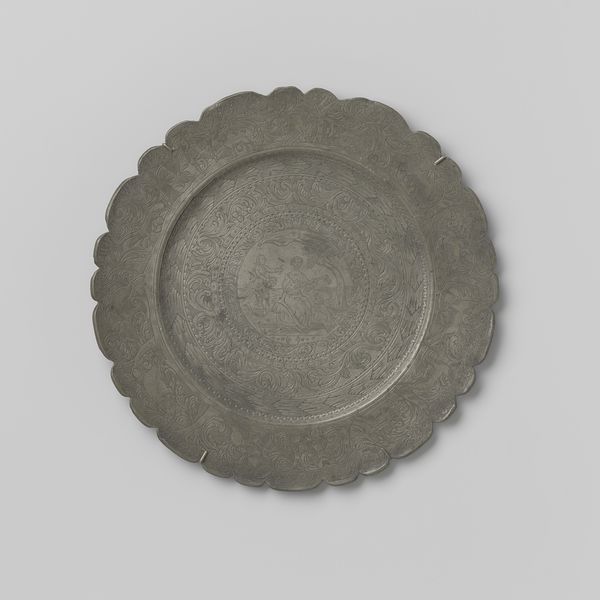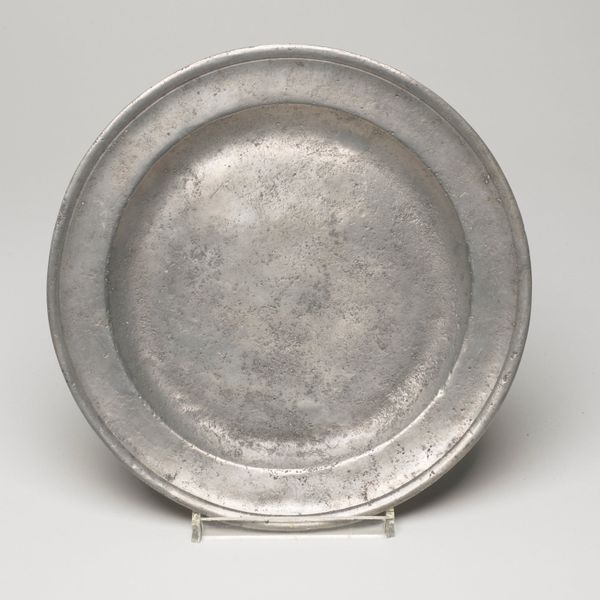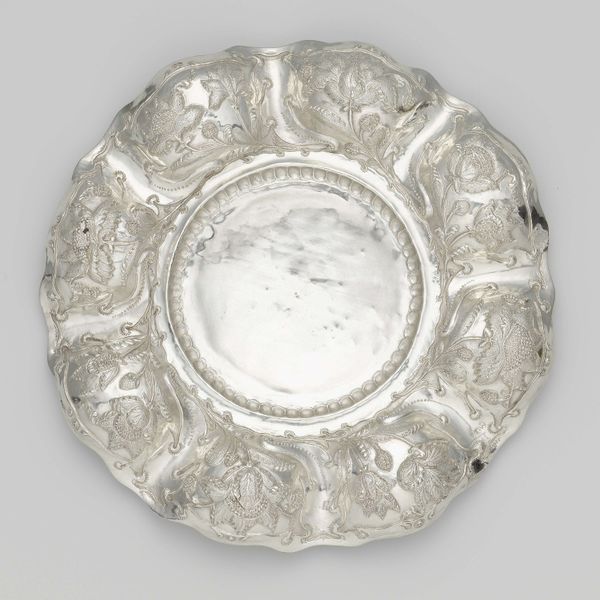
Dimensions: height 3.1 cm, length 41.0 cm, width 31.0 cm
Copyright: Rijks Museum: Open Domain
This oval dish with a scalloped edge was made by Carolus Theodorus de Ruijr sometime before 1795. It’s pewter, an alloy of tin with a small amount of other metals like lead or copper to make it stronger. Pewter objects like this were often cast in molds, and the surface was likely finished by hand, using tools to smooth and polish the material. Pewter was a popular material because it was cheaper than silver, but could still be fashioned into elegant forms. The scalloped edge here shows that it's not a purely functional object, but one intended for display. The silvery appearance of the pewter would have been quite fashionable at the time, reflecting a growing interest in refined dining and domestic display among the rising middle class. We might also consider the labour involved in pewter production - from mining the raw materials to the skilled craftsmanship required to cast and finish the object. Considering the material and its making allows us to appreciate how this object reflects broader social and economic trends of its time.
Comments
No comments
Be the first to comment and join the conversation on the ultimate creative platform.

